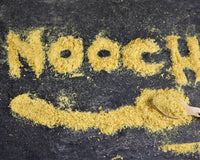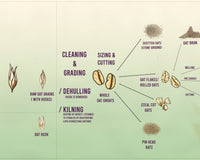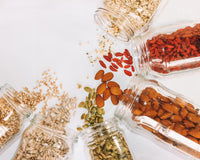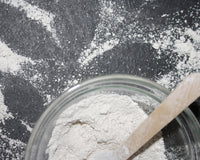Blood pressure can be a finicky thing. We all know about the risk of high blood pressure, but did you know low blood pressure can be problematic too? In this blog post we’ll explore what constitutes low blood pressure, why you might want to rebalance it, how to reduce your risk long term, some strategies for doing just that.
What is low blood pressure?
As we outlined in our previous blog post on high blood pressure, blood pressure is essentially the force of blood against the artery walls. Over the course of a day it goes up and down, but when it stays low for a period of time it becomes known as low blood pressure.
Your blood pressure consists of two numbers. The first is the systolic pressure, which measures the pressure when your heart pushes blood out. The second number is the diastolic pressure and this one measures the pressure when your heart rests between beats. According to the NHS, low blood pressure is a reading of less than 90/60mmHg.
Why might you want to rebalance low blood pressure?
The main reason for wanting to increase your blood pressure would be to alleviate symptoms such as feeling lightheaded, weak and sick, along with suffering from blurred vision, confusion and fainting.
Unfortunately, finding out why you have low blood pressure can be tricky. There are many causes of low blood pressure including anaemia, stress, vigorous exercise, pregnancy, a number of medical conditions and even some medications.
Low blood pressure is rarely solved with medicine, as the NHS states: "simple lifestyle measures or treating the underlying cause is usually effective."
The good news is, one of the most straightforward ways to alter your blood pressure is through the food and drink you consume. With that in mind, here is a dietary approach you can take to help rebalance your blood pressure.
Foods that help with low blood pressure
1. More fluids
If you’re worried about low blood pressure, one of the first simple changes to make is to drink more. When you’re dehydrated, your blood volume decreases which causes your blood pressure to drop. So it’s time to make BFFs with H2O.
Not a fan of drinking water on it's own? Pep up plain water with a slice of fruit or keep your hydration game interesting with herbal teas. It’s especially important to make sure you’re drinking enough when exercising.
2. Boost B12
Research has found a B12 deficiency can contribute to low blood pressure. And while estimates indicate only 6% of the under-60s UK population is thought to have a B12 deficiency, certain groups are more likely to experience it such as those who have poor nutrition, are older than 60 or are following a vegan or vegetarian diet.
If your levels are low, it’s time to add a load of B12-packed goodies to your shopping list. Meat is a good source of B12, as are eggs which would be a good vegetarian alternative. Vegans may want to up their intake of fortified cereals and nutritional yeast. You might also consider a high quality B12 supplement.
3. Leafy greens
If your diet lacks folate, it could mean your body hasn’t got what it needs to produce enough red blood cells and this can sometimes result in low blood pressure.
Green leafy vegetables are an excellent, plant-based source of folate. Think kale, spinach and broccoli. Blitz them up into a warming winter soup or if you don’t like the taste, add a few greens to fruit smoothies or whizz into pasta sauces. All the goodness, none of the taste!
4. Beans and legumes
Another convenient source of folate is beans and legumes. Add a tin of lentils to your stews, casseroles and curries, or better yet cook up your own dried beans and enjoy a from-scratch folate boost to your meals.
5. Liquorice
If you've got a taste for this retro sweet - good news! Liquorice contains the compound glycyrrhizin, which can alter your levels of potassium and sodium, which help regulate body fluid. This in turn can raise your blood pressure. You'll only want to indulge every once in a while, though - glycyrrhizin is believed to be between 30 - 50 times sweeter than sugar!
6. Salty food
We all know that if you've got high blood pressure you need to cut back on salty foods, but the opposite is true if you want to reduce your blood pressure. This is not a green light for heading to your nearest takeaway and loading up on fries, sadly! Where possible, stick to healthier options that offer more nutrition than just salt. Think pickled vegetables and smoked fish - anyone for a Scandinavian Smörgåsbord?
7. Coffee
Caffeine is believed to spike blood pressure as it kicks the cardiovascular system into action which in turn boosts your heart rate. That means there’s no need to cut out your daily cup of joe if you’re trying to ease low blood pressure.
Other means to rebalance low blood pressure
As well as a healthy diet, there are few other lifestyles tweaks you could experiment with when it comes to controlling blood pressure. For starters, take extra care as you transition from sitting to standing, as well as getting out of bed in the morning.
Speaking of bed, the NHS suggests raising it at the head end by around 15cm. When it comes to mealtime, try eating smaller but more frequent meals and try and schedule in some downtime afterwards so you’re not up and off straight away. Along with a few dietary changes, these simple tips could help you to rebalance your blood pressure and empower you to carry on living your very best life.






